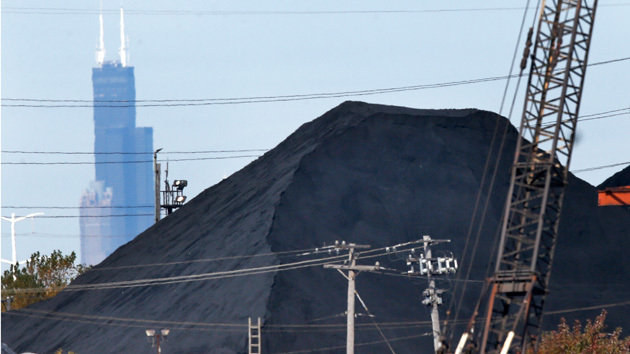
Chicago
Organizations
- The Chicago Academy of Sciences and its Peggy Notebaert Nature Museum
- Civic Lab
- Southeast Side Coalition to Ban Petcoke
- Uncommon Commons
- Southeast Environmental Taskforce
Projects
Petroleum Coke Cleanup
The Southeast Environmental Task Force and community activists have hosted multiple workshops to construct aerial maps of petroleum waste piles using balloon mapping techniques. Petroleum coke, or 'petcoke' is a waste product of the petroleum industry being stored at multiple sites in Southeast Chicago. It resembles a dark dust or ash. It is illegal to burn petcoke in the United States for energy due to environmental hazards, so petcoke is stored and then shipped internationally. Petcoke piles in the area are uncovered and present health hazards/concerns due largely to petcoke easily being blown as a dust around residential areas surrounding the piles.
Southeast Environmental Task Force and community activists hosted two workshops this spring to teach community members how to conduct balloon mappings to document the petcoke piles, and discuss ideas to estimate the volume of the piles as well as low-cost air monitoring techniques. An overview of the first workshop can be found here. Using methods described here, the group visited several sites around Southeastern Chicago, and constructed maps of the piles.
Issues
Southeast Chicago, as an old steel mill industrial area, has a history of industrial pollution and brownfields. There has been a lot of press about a new and recent environmental issue - massive piles of 'petcoke' or petroleum coke waste left over after refining from Canadian tar sands that are being stored in open-air piles in Southeast Chicago. Oil that is refined across the state border in Whiting, Indiana and then is being sent to southeast Chicago for storage to evade some environmental regulations. Concerns from petcoke dust bowing over the neighborhood and causing health issues have been raised many times by residents, activists and media outlets such as NPR as the businesses involved are owned by the Koch brothers and the increasing debate on environmental effects of tar sands practices.